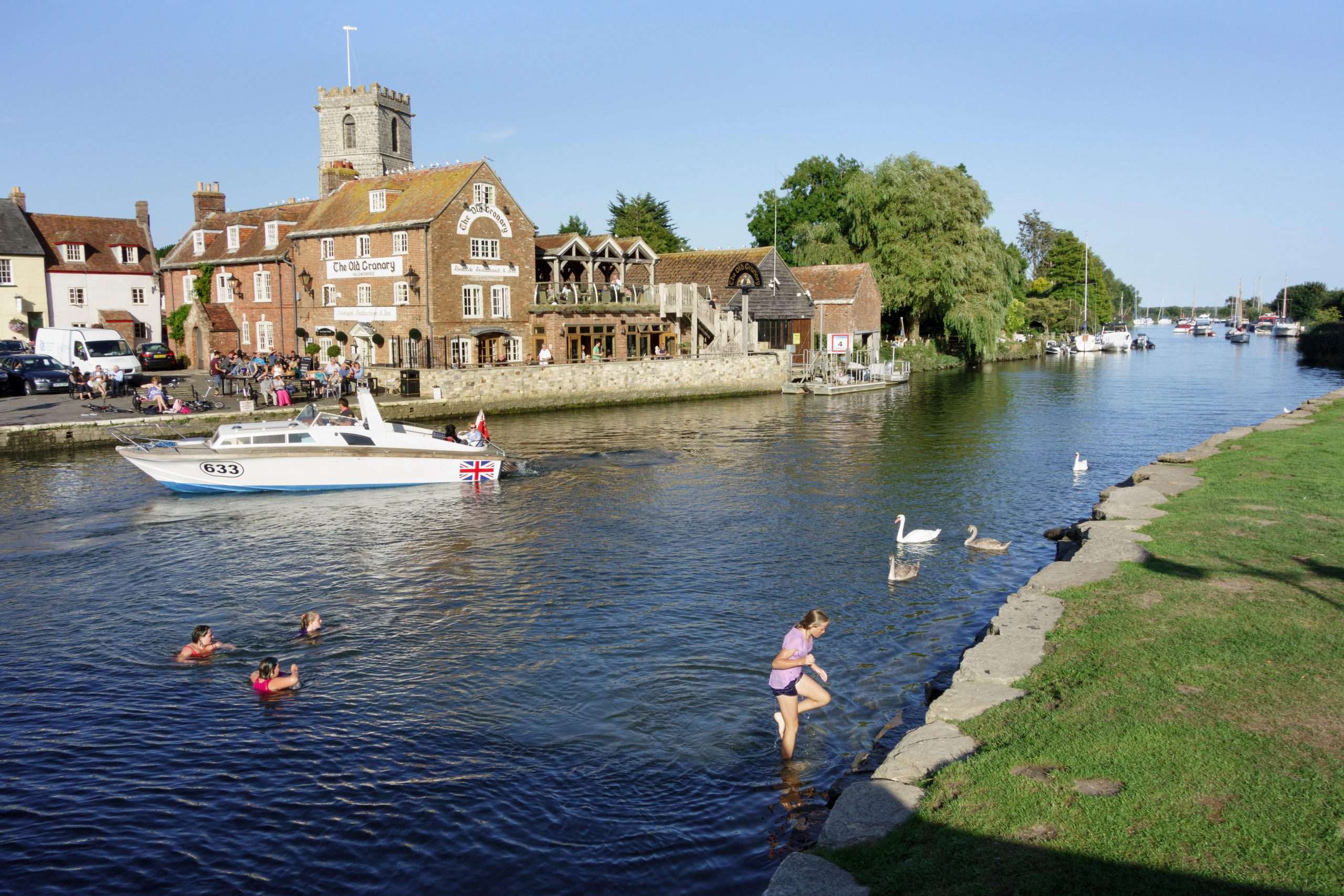As a series of heatwaves grips the UK, now is to the time to tell your kids about the open water swimming dangers they might face. The temptation is to jump into rivers and canals to cool down in the sunny weather. But there have been some tragic tales recently.
A 16-year-old boy died in the Aire and Calder Navigation canal in Wakefield, whilst the body of another 16-year-old boy was recovered from water filling an abandoned quarry in Wigan.
Make sure your children and teenagers know exactly what they could face if they choose to go open water swimming this summer.

Open water swimming dangers
1. Cold water can kill
Royal Life Saving Society UK (RLSS) says all waters in and around the UK and Ireland are cold enough to cause cold water shock, even in summer. This shock can make swimming difficult. You may start to hyperventilate and your blood pressure may shoot up as your body tries to keep the blood warm by moving it towards the middle of your body.
As the muscles cool, strength, endurance and muscle control reduce to the point when you may not be able to swim any longer and could have difficulty getting out of the water.
2. Assess your surroundings
When around water, children need to remember to stop and think. The ‘water safety code’ says to take time to access your surroundings, look for dangers and research local advice.
Look for possible dangers before getting into any water, including the depth, which may be different in different parts.

3. Remember there may be unseen dangers
One of the most important types of open water swimming dangers is the hidden kind. There can be many nasty and potentially dangerous surprises lurking under water, including sharp objects, and weeds that legs can get tangled in. Underwater objects and hazards may not be visible so it might be difficult to plan around them.
4. Find out about currents
There may be strong currents in seas and rivers, which may not be at all obvious from the surface. But they could challenge even the strongest swimmers. There may be signs warning about currents, or local people may know if you talk to them.
5. Look out for lifeguards and safety equipment
If there are lifeguards at an open water site, or even safety equipment like lifebelts, clearly the water is a lot safer. If there’s a lack of safety equipment, that makes a rescue more difficult.
6. Float to live
Parents should make sure children know that floating could help save their lives if they get into difficulty in open water. If you fall in or become tired, stay calm, float on your back and call for help. If you see someone in the water, throw something that floats to them and resist temptation to go in.
7. Make sure you’re with friends
Always go swimming with friends or family. Stay together when around water so if anything goes wrong you’ve got someone there to help.
8. Stay near the shore
Warn kids not to swim too far away from the shore. Always swim parallel to the shore so you are never too far away.
9. Know what to do in an emergency
With so many open water swimming dangers, it’s vital that parents make sure their children know what to do if something goes wrong. In an emergency, call 999 and ask for the Fire and Rescue service when inland and the Coastguard if at the coast.









